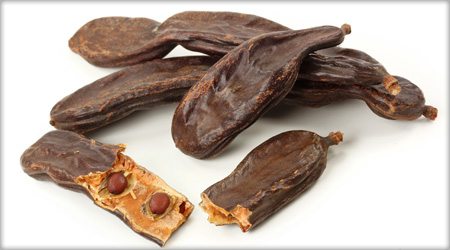
Many of the foods we know and love today are combinations of natural components
that may otherwise not naturally get along with one another. For example, oil and
vinegar make our favorite salad dressings; however, these two liquids want nothing to do with one another and will separate at the first given chance. In order to render various components (oil, water, fat, air, protein, etc.) compatible, the creation of an interface between the conflicting properties is needed, and to do so, emulsifiers are used. Emulsifiers are molecules that are friendly to all conflicting parties, creating a homogenous mixture and preventing separation.1 Perhaps the most notable natural emulsifier is lecithin, found in egg yolks – one of the original ingredients used in the Old World Gelato Process. Modern sources of emulsifiers are derived from animal, vegetable and synthetic sources, such as mono- and diglycerides from palm, soy bean and sunflower oils, and allow better consistency and more reliability in final products.

In addition to emulsifying, stabilizing a mixture may be necessary or desired in order to give body as well as consistency of texture, flavor and color to various foods. Especially important in frozen desserts, stabilizers help to prevent ice-crystal formation during storage, while increasing melt-resistance. Stabilizers such as gelatin, agar, pectin, carrageenan and vegetable gums are obtained from various natural plant and animal sources. Let’s take a closer look at a few stabilizers you are likely to find on your everyday food labels:
Guar gum is derived from the guar plant – a member of the legume family. The bean-like pods contain seeds, the endosperm of which is ground to create the gum. Guar gum is a natural, edible thickening agent used in a variety of food applications, especially in the dairy industry. Its appearance is a white to yellowish, water- soluble, odorless powder, allowing it to thicken foods without altering other characteristics such as texture, color and taste.2 With approximately eight times the thickening power of corn starch, as well as good freeze-thaw constancy, guar gum serves as a natural way to increase stability, body and suspension capabilities in a variety of foods.
Locust bean gum is derived from the pods of the carob tree and is used in many modern food products such as cheeses, ice cream, frozen desserts, pie fillings and soups. Its ability to enhance the texture of foods renders it a valuable stabilizing agent in the food industry. For example, the use of locust bean gum in ice cream and gelato creates a smoother, more flavor-consistent final product that is less vulnerable to melting. Furthermore, locust bean gum boasts various health claims, such as its ability to increase dietary fiber in food, without increasing the calorie count.3 For this reason, locust bean gum is often found in low-calorie and diet foods, since it allows original flavors to be maintained while other ingredients are removed. Additionally, due to the rising incidence of gluten intolerance, locust bean gum has recently gained popularity as a nonallergenic alternative to gluten – imitating the effects in finished goods.3
Carrageenan is a natural compound derived from particular species of red seaweed. Different types of carrageenan have been identified for use in food applications, chosen depending on the user’s desire for solubility, freeze-thaw stability, elasticity and viscosity in final products.4 Carrageenan is known to operate synergistically with other gums and thickening agents, and is particularly well-suited for increasing viscosity in food products.
It is important to recognize the valuable properties of emulsifying and stabilizing agents, and how they can help your bottom line. That is, creating a texturally and flavorfully consistent product keeps your customers satisfied, while stability and shelf life mean less waste for you. And don’t fret if you want to maintain an all-natural product base – food additives have come a long way, and many natural extracts and derivatives (such as those listed above) are available and able to be customized to your liking.
References:
1 Emulsifiers. (2009). Food Additives. Retrieved July 7, 2009, from
foodadditivesworld.com/emulsifiers.html.
2 Guar Gum. (2009). Altrafine Gums. Retrieved July 7, 2009, from guargum.biz.
3 Locust Bean Gum Powder. (2009). Glyconutrition for Life. Retrieved July 7, 2009, from glyconutritionforlife.org/Science_of_Glyconutrients/Locust_Bean_Gum_Powder.php.
4 Carrageenan. (2006). Marcel Carrageenan. Retrieved July 7, 2009,
from marcelcarrageenan.com/carrageenan.html.
